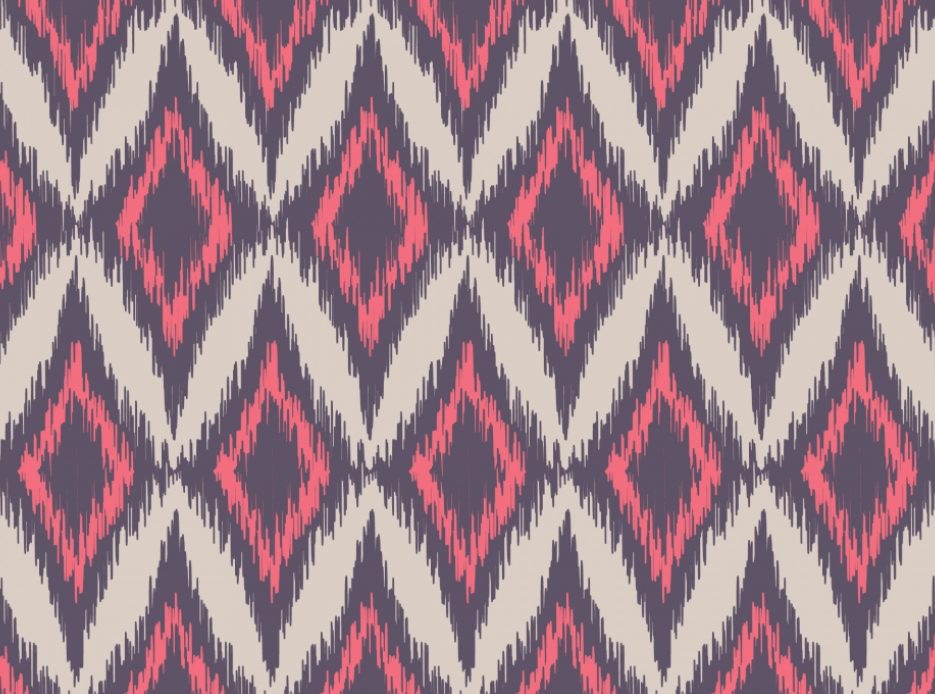
Which materials and tools are used to make Ikkat sarees?
A) Wooden loom
B) Small knives
C) Colours
D) All of these
Answer
381.3k+ views
Hint: Ikat is an Indonesian dyeing process for patterning textiles that resist dyeing on the strands before coloring and weaving the cloth. Individual strands or bundles of yarns are bound with a tight wrapping applied in the desired pattern to make the ikat resist. After that, the yarns are colored.
Complete answer:
The apparent "blurriness" of the design is a hallmark of ikat textiles. The blurriness is caused by the weaver's struggle to line up the colored strands so that the design appears correctly in the completed cloth. By utilizing finer yarns or improving the craftsperson's competence, the blurriness can be minimized. Ikats with a lot of blurriness, various colors, and complex patterns are more difficult to make and thus more expensive. Textile collectors, on the other hand, cherish the blurriness that is so characteristic of ikat.
The raw materials used to make Ikat sarees are silk, cotton, and dye colors. Silk is a rare material used to make silk saris, and cotton threads are used to weave a variety of items. Fabric colors are used for cotton threads, while chemical colors are utilized for silk threads.
There are different kinds of tools which are used in the reeling, dyeing, and weaving processes. A dyeing machine is used to dye a huge number of threads at once. Small wooden looms are used to weave sarees, whereas large looms are used to weave bedspreads and other fabrics. The fly shuttle is used to insert into the fly shuttle during weaving. Cotton threads are reeled in on the warping wheel, and reed is used in the jointing process. Spools and spindles are prepared using spinning wheels, and a reeling machine is used to make spools. When warping, spools are used, and when weaving, spindles are used. Small knives are used to cut the extra yarns.
Weaving of Ikkat cloth is shown in the image below:

Ikkat cloth pattern can be seen in the below image:

Therefore the correct answer is option ‘D’.
Note: Ikat is a resist dyeing process used by many cultures throughout the world. It is most likely one of the oldest types of textile ornamentation. It is, nevertheless, most common in Indonesia, India, and Japan. Ikat is still famous in Argentina, Bolivia, Ecuador, Guatemala, and Mexico, respectively, in South, Central, and North America.
Complete answer:
The apparent "blurriness" of the design is a hallmark of ikat textiles. The blurriness is caused by the weaver's struggle to line up the colored strands so that the design appears correctly in the completed cloth. By utilizing finer yarns or improving the craftsperson's competence, the blurriness can be minimized. Ikats with a lot of blurriness, various colors, and complex patterns are more difficult to make and thus more expensive. Textile collectors, on the other hand, cherish the blurriness that is so characteristic of ikat.
The raw materials used to make Ikat sarees are silk, cotton, and dye colors. Silk is a rare material used to make silk saris, and cotton threads are used to weave a variety of items. Fabric colors are used for cotton threads, while chemical colors are utilized for silk threads.
There are different kinds of tools which are used in the reeling, dyeing, and weaving processes. A dyeing machine is used to dye a huge number of threads at once. Small wooden looms are used to weave sarees, whereas large looms are used to weave bedspreads and other fabrics. The fly shuttle is used to insert into the fly shuttle during weaving. Cotton threads are reeled in on the warping wheel, and reed is used in the jointing process. Spools and spindles are prepared using spinning wheels, and a reeling machine is used to make spools. When warping, spools are used, and when weaving, spindles are used. Small knives are used to cut the extra yarns.
Weaving of Ikkat cloth is shown in the image below:

Ikkat cloth pattern can be seen in the below image:

Therefore the correct answer is option ‘D’.
Note: Ikat is a resist dyeing process used by many cultures throughout the world. It is most likely one of the oldest types of textile ornamentation. It is, nevertheless, most common in Indonesia, India, and Japan. Ikat is still famous in Argentina, Bolivia, Ecuador, Guatemala, and Mexico, respectively, in South, Central, and North America.
Recently Updated Pages
Master Class 9 General Knowledge: Engaging Questions & Answers for Success

Master Class 9 English: Engaging Questions & Answers for Success

Master Class 9 Science: Engaging Questions & Answers for Success

Master Class 9 Social Science: Engaging Questions & Answers for Success

Master Class 9 Maths: Engaging Questions & Answers for Success

Class 9 Question and Answer - Your Ultimate Solutions Guide

Trending doubts
Voters list is known as A Ticket B Nomination form class 9 social science CBSE

The president of the constituent assembly was A Dr class 9 social science CBSE

What are the causes of uneven distribution of population class 9 social science CBSE

Explain Right to Equality

Find the day of the week on 26 January 1950 class 9 maths CBSE

Fill in the blank with the most appropriate option class 9 english CBSE




